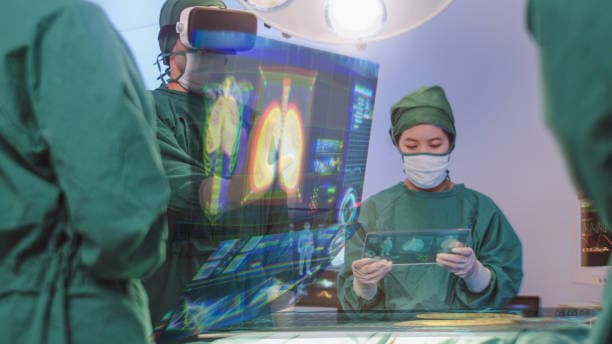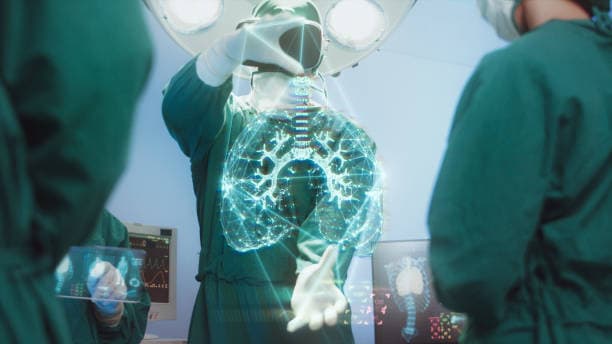This article delves into the “Innovations in Modern Surgical Techniques,” tracing the historical evolution of surgery and examining cutting-edge advancements. It highlights key developments like minimally invasive and robotic-assisted surgeries, smart instruments, and novel materials. The piece is aimed at medical professionals, students, and technology enthusiasts, offering insights into how these innovations enhance precision, reduce recovery times, and improve patient outcomes. Readers will gain an understanding of the future direction of surgical technology and the ethical considerations involved, making it a comprehensive guide to the latest trends in the surgical field.
Historical Overview of Surgical Innovations
The journey of surgical innovations is a testament to human ingenuity, tracing back to ancient times when rudimentary tools and techniques were used for healing. Initially, surgery was simplistic, relying on basic methods like suturing wounds and setting bones. As civilizations advanced, so did surgical practices. The Greek physician Hippocrates laid the groundwork for surgical ethics, while the Roman medical writer Galen contributed significantly to early surgical knowledge.
The Renaissance period marked a turning point with the advent of anatomical studies, enhancing understanding of the human body. However, it was the 19th and 20th centuries that witnessed revolutionary changes, spurred by the discovery of anesthesia and antiseptics, which made surgeries less painful and more sterile. The 20th century saw the advent of minimally invasive techniques, starting with the first laparoscopic procedure. This paved the way for modern surgical innovations, where technology and methodology have advanced to offer precision, reduce recovery times, and improve overall patient outcomes. Today’s surgical landscape is characterized by robotic-assisted surgeries, advanced imaging techniques, and a focus on patient-specific procedures, showcasing a significant transition from traditional to modern surgical techniques.
Key Innovations in Surgical Technology
Surgical technology has evolved significantly, offering groundbreaking methods that enhance the efficacy and safety of medical procedures. Among these, Minimally Invasive Surgery (MIS) and Robotic-Assisted Surgery stand out as transformative advancements.
Minimally Invasive Surgery (MIS)
MIS represents a leap forward in surgical technique, prioritizing smaller incisions, reduced pain, and quicker recovery times compared to traditional open surgery. This approach minimizes tissue damage and shortens hospital stays, which significantly improves patient outcomes. Examples of MIS techniques include:
- Laparoscopy: Utilizing a laparoscope to perform abdominal surgeries through small incisions.
- Endoscopy: Inserting a flexible tube with a camera to view or operate on internal organs without large incisions.
- Robotic surgery: Enhancing the capabilities of laparoscopy with robotic precision and control.
Robotic-Assisted Surgery
Robotic systems in surgery have revolutionized the field by providing unparalleled precision and control. These systems, such as the da Vinci Surgical System, combine advanced robotics, 3D visualization, and articulated instruments to facilitate complex procedures. Their development has been a game-changer, especially in areas requiring meticulous precision, like neurosurgery, cardiothoracic, and urological surgeries. The impact of robotic-assisted surgery is profound, offering:
- Enhanced surgical precision and flexibility.
- Improved control over surgical instruments.
- Better visualization of the surgical site.
- Reduced surgeon fatigue, leading to better outcomes in lengthy procedures.
Together, MIS and robotic-assisted surgery embody the pinnacle of modern surgical innovations, enabling safer, more effective, and patient-centered surgical care.
Advancements in Surgical Materials and Tools
The evolution of surgical materials and tools has played a crucial role in advancing medical procedures, enhancing both safety and efficacy. Innovations like smart surgical instruments and biocompatible materials are at the forefront of this transformation.
Smart Surgical Instruments
Smart surgical instruments are equipped with advanced technologies that provide real-time feedback and augmented reality integration, revolutionizing the way surgeries are performed. These instruments increase surgical accuracy and reduce the potential for human error by offering enhanced visibility and precision. For example, sensors on surgical tools can alert surgeons to vital tissue properties, aiding in more accurate incisions and suturing.
Biocompatible Materials and Tissue Engineering
Recent advancements in surgical materials have introduced a variety of biocompatible options that integrate well with the human body, promoting faster healing and reducing rejection risks. These include:
- Titanium and its alloys for bone surgery, known for their strength and compatibility with body tissues.
- Polymers like polylactic acid (PLA) used in sutures and tissue engineering, renowned for their biodegradability and minimal inflammatory response.
- Hydrogels for wound care and drug delivery, appreciated for their moisture retention and ability to mimic tissue properties.
Additionally, tissue engineering has made significant strides, with the development of lab-grown tissues and organs offering new possibilities for regenerative medicine. This field combines scaffolding materials, growth factors, and cells to create functional tissues, aiding in the repair or replacement of damaged organs and revolutionizing reconstructive surgery and organ transplantation.
Improvements in Surgical Techniques and Procedures
Surgical techniques and procedures have undergone significant improvements, becoming more precise and less invasive. Innovations such as Image-Guided Surgery (IGS) and non-invasive treatment alternatives have redefined surgical standards and patient care.
Image-Guided Surgery (IGS)
Image-Guided Surgery (IGS) utilizes advanced imaging technology to enhance surgical accuracy and safety. This technique allows surgeons to view high-definition, three-dimensional images of the patient’s anatomy during surgery, leading to more precise incisions, reduced risk of complications, and improved outcomes. IGS has been particularly transformative in neurosurgery, orthopedics, and ENT procedures, where the margin for error is minimal.
Non-invasive Treatment Alternatives
Non-invasive and minimally invasive treatments have revolutionized patient care by offering effective solutions with less risk and downtime. These methods include:
- Cryotherapy: Uses extreme cold to freeze and destroy abnormal tissue.
- Laser surgery: Employs focused light beams to remove or treat tissues.
- Focused ultrasound surgery: Utilizes high-frequency ultrasound waves to heat and destroy targeted tissue without damaging surrounding areas.
Here is a comparative analysis of these non-invasive techniques with traditional surgical methods:
| Treatment Method | Non-invasive/Minimally Invasive | Traditional Surgery |
| Cryotherapy | Localized treatment with minimal tissue damage | May require extensive tissue removal |
| Laser Surgery | Precise targeting with minimal scarring | Can result in larger scars and longer recovery |
| Focused Ultrasound Surgery | No incisions, preserving surrounding tissues | May involve incisions and affect adjacent tissues |
These advancements highlight the shift towards more patient-friendly surgical options, emphasizing the importance of precision, reduced recovery time, and improved overall outcomes.
Future Directions and Ethical Considerations
As we look towards the future of surgery, emerging technologies and ethical considerations are shaping the next frontier in surgical innovation. Predictive advancements and the integration of artificial intelligence (AI) are set to redefine surgical standards and patient care.
Innovation Trends in Surgical Technology
The future of surgical techniques and technologies is poised for transformative changes, with AI and machine learning leading the charge. These advancements are expected to enhance precision, reduce human error, and streamline surgical workflows. AI-driven analytics can predict patient outcomes, customize surgical plans, and assist in real-time decision-making. Machine learning algorithms are being developed to improve diagnostic accuracy, optimize surgical techniques, and predict potential complications before they occur. This integration of technology in surgery promises to elevate the level of care, making procedures more efficient, safer, and tailored to individual patient needs.
The potential impact of AI in surgery extends beyond operational efficiency. It includes the ability to perform complex analyses of medical data, leading to more informed surgical decisions and personalized patient care strategies. As these technologies evolve, they will continually redefine the boundaries of what is possible in the surgical field.

Conclusion
In the dynamic realm of surgical innovation, each stride forward intertwines complexity with breakthrough, crafting a landscape where the conventional borders of medicine are ceaselessly reimagined. The odyssey from rudimentary incisions to the precision of robotic arms epitomizes not merely technological evolution but a paradigm shift in patient-centric care. As we traverse this intricate tapestry of modern surgery, where smart tools and biocompatible marvels redefine healing, we stand at the cusp of an era where AI’s intellect merges with the surgeon’s skill, promising a horizon brimming with precision, efficiency, and bespoke therapeutic interventions. Thus, the continuum of surgical innovation, a testament to human ingenuity and empathy, remains pivotal, ensuring that the art and science of surgery perennially enhance the sanctity of patient care, heralding an epoch where the once inconceivable becomes the cornerstone of medical excellence.
